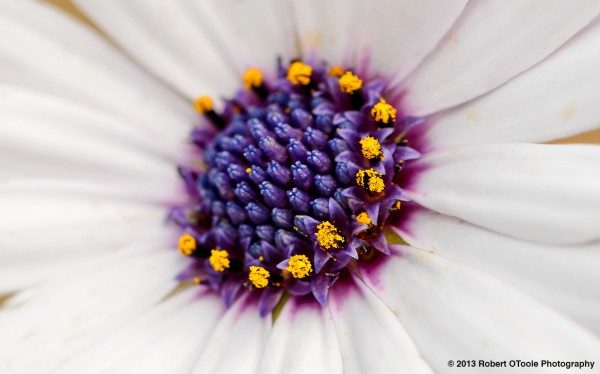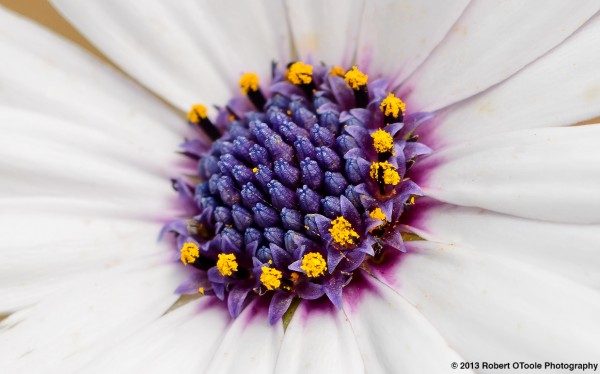One of the biggest challenges with macro photography is working with a limited depth of field or DOF. When I am shooting macro I am always trying to make sure the subject and elements in the frame appear sharp by adjusting the aperture and making sure the important elements in image fall on the plane of focus by adjusting my angle of view. But there is another important element that has a huge effect on DOF that most people don’t even know about, how a different sensor format can and will affect the depth of field in your image. Moving to a smaller sensor format at the same apparent magnification will give you lots more DOF to work with in your macro images.
Right about now most photographers even those that are at an advanced level will get a skeptical look on their faces and then proceed to tell me how wrong I am on this, but its true! Going from a full frame format to a DX format for example will give you 1-2 stops more DOF at a longer working distance.
For macro photography you should only be concerned with filling the frame and not a precise or exact magnification ratio. Instead you all you need to care about is fill the frame with a subject. With this in mind a smaller DX sensor will produce more apparent magnification than a full frame sensor since the object fills more of the frame at less magnification. In other words an object that fills the frame on a full frame sensor body at 1:1 magnification, will have much more working distance and Depth of Field when filling the frame with the same subject on a DX sensor body since you won’t need as much magnification and will be photographing from a farther distance.
Look at the following examples to see for yourself just how much more DOF there is in a smaller sensor format image vs a full frame image.


To make the second image I switched to DX (or APS-C) sensor format mode then moved back the tripod back to reframe at approximately the same size in the viewfinder but with less magnification and more distance from the subject. At this small image size its hard to actually see the difference so take a look at the center crops from the images above so you can see the differences in DOF clearly. Note that there was some slight subject movement due to a breeze.


So what does this actually mean for the macro photographer working in the field? You can gain lots of depth of field and working distance by switching sensor formats and matching the size of the subject in the viewfinder. Look at the two images above, the gain in DOF is dramatic. The difference is more than a full stop of DOF. This means you can gain DOF, gain working distance, and on some DSLRs there is not even a need to switch bodies to change sensor format.
Remember this post is not about comparing the amount of DOF at a certain magnification level with different sensor formats. At a set magnification different sensor sizes (and even various focal lengths) all have the same DOF. Instead we looked at how to use apparent magnification with different formats to achieve a great DOF increase when moving to a smaller sensor format. With all the confusion and misinformation in the media today I hope you can use this information to improve your macro photography technique.
Let me know if you have any questions of comments below and I will be happy to reply.
Robert O’Toole is a Sigma Pro and has been a professional photographer for more than 10 years. As an accomplished instructor, Robert leads photography workshop tours across the US and internationally. For more info visit Robert’s web site at robertotoolephotography.com



This is a very interesting comparison but what is important to consider is also pixel size, as with smaller pixels there is higher diffraction and lower sharpness. WOuld be interesting to sompare this with different bodies and see how much you can close down the apperturte while maintaining sharpness.
Thank you so much for posting this! I had got my head in a spin searching the internet and trying to work out if I would get more in focus with a smaller sensor when filling the frame. Now I know I will.